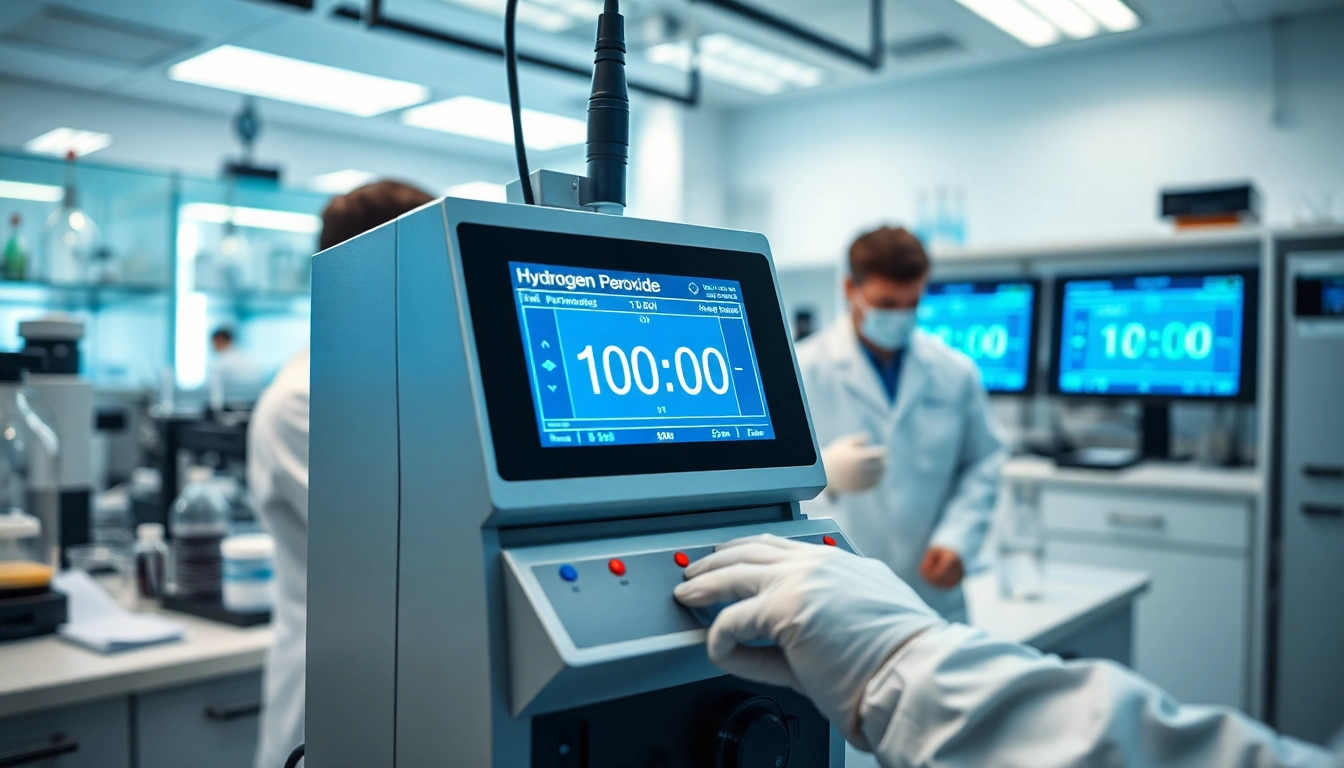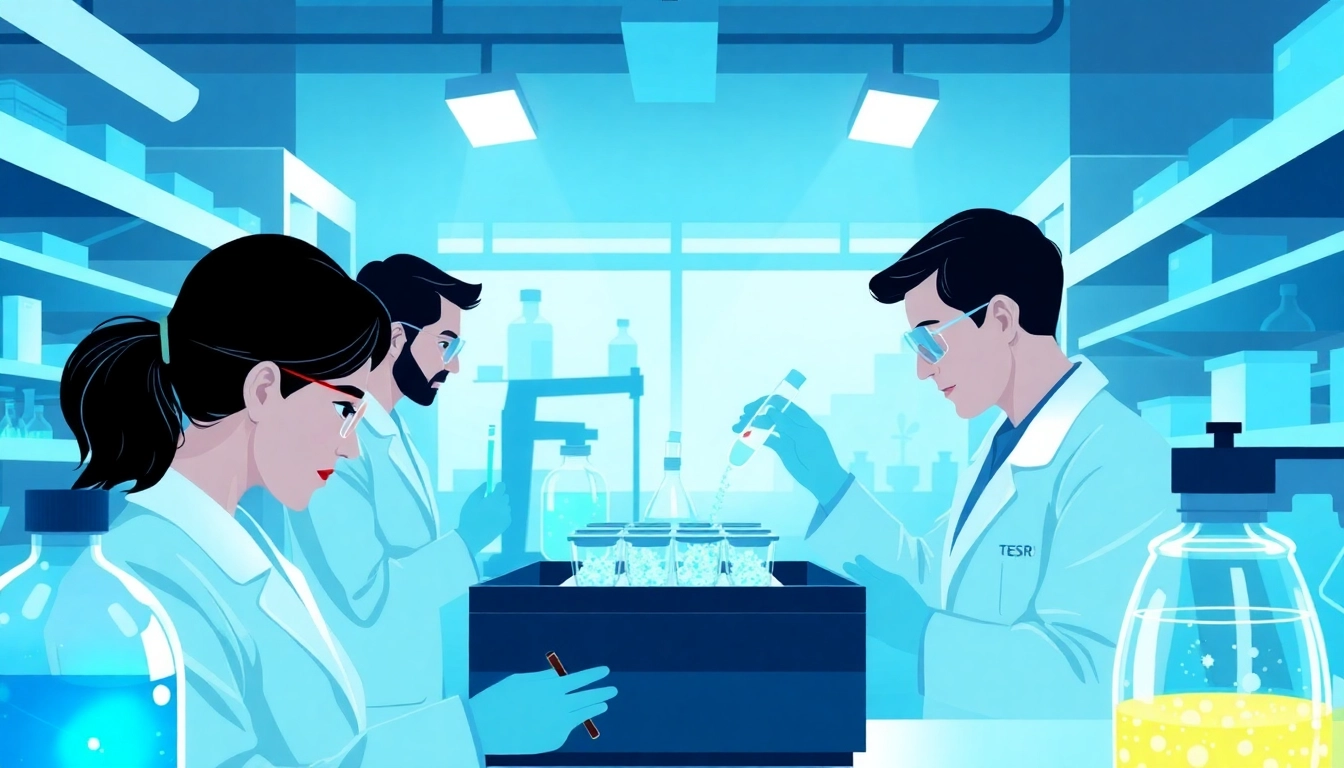1. Introduction to Hydrogen Peroxide Detection
Hydrogen peroxide is a widely used substance with unique properties that make it crucial in various industries, from healthcare to manufacturing. As its applications broaden, the necessity for effective Hydrogen Peroxide detection becomes increasingly significant. Proper detection ensures safety and compliance with health regulations while optimizing processes where this compound is utilized. In this article, we will delve into the intricacies of hydrogen peroxide, the importance of its detection, methods available, and its applications across different sectors.
1.1 What is Hydrogen Peroxide?
Hydrogen peroxide (H2O2) is a pale blue liquid, slightly more viscous than water, and is most commonly known as a disinfectant and bleaching agent. Its unique structure consists of two hydrogen atoms attached to two oxygen atoms. This simple yet powerful compound acts as a strong oxidizer, which makes it effective against bacteria, viruses, and fungi. Produced both naturally and synthetically, hydrogen peroxide is frequently used in various concentrations for cleaning and sterilization purposes.
1.2 Importance of Detection in Various Industries
The necessity of detecting hydrogen peroxide spans multiple industries. In healthcare settings, monitoring H2O2 levels is vital to ensure patient safety during sterilization procedures. Incorrect concentrations can lead to ineffective sterilization or damage to equipment. Additionally, in the food industry, proper detection ensures safe usage as a preservative. In manufacturing, especially in the textile and paper industries, maintaining specific hydrogen peroxide levels is essential for quality and consistency in products.
1.3 Overview of Detection Methods
Various methods can be employed to detect hydrogen peroxide, each tailored to specific requirements or industrial applications. These include colorimetric methods, which rely on chemical reactions producing color changes, and advanced sensor technologies that use electronic devices for real-time monitoring. Understanding the strengths and limitations of these methods aids in selecting the appropriate technique for each circumstance.
2. Chemical Properties of Hydrogen Peroxide
2.1 Reactions and Stability
Hydrogen peroxide is a versatile compound that can participate in several chemical reactions. As an oxidizing agent, it can react with a variety of substances, producing different outcomes depending on the other material involved. Its stability can be influenced by factors such as temperature, light exposure, and the presence of impurities, which can lead to rapid decomposition into water and oxygen. Therefore, handling and storage conditions are crucial for maintaining the integrity of hydrogen peroxide solutions.
2.2 Health and Safety Concerns
While hydrogen peroxide is effective for cleaning and disinfecting purposes, it also poses certain health risks if not handled correctly. Concentrated solutions can cause skin irritation, eye damage, and respiratory issues. In industrial settings, workers are required to follow strict safety protocols and use appropriate personal protective equipment (PPE) to mitigate these risks. Regular monitoring of hydrogen peroxide levels becomes crucial in ensuring a safe work environment.
2.3 Regulatory Standards and Compliance
Several regulatory agencies, including the Occupational Safety and Health Administration (OSHA) and Environmental Protection Agency (EPA) in the United States, set specific thresholds for hydrogen peroxide concentrations. Industries that utilize this compound must stay compliant with these regulations to avoid penalties and ensure the safety of their operations. Regular inspection and monitoring practices can aid in meeting these compliance requirements effectively.
3. Detection Methods and Technologies
3.1 Colorimetric Methods for Hydrogen Peroxide Detection
Colorimetric detection methods rely on the change of color in a solution as a response to the presence of hydrogen peroxide. Such methods generally use indicators that react with H2O2 to produce a measurable color change. While these methods can be relatively low cost and easy to use, they may not provide the real-time data that some applications require or may lack accuracy in quantifying H2O2 levels.
3.2 Advanced Sensor Technologies
Advancements in technology have led to the development of sophisticated sensors that can detect hydrogen peroxide levels with high accuracy. These sensors often use electrochemical or optical methods to monitor real-time levels. Many are designed for integration into automated systems, allowing for continuous monitoring and immediate response to fluctuations in hydrogen peroxide concentrations. This is particularly valuable in industries where safety and compliance are critical.
3.3 Comparison of Detection Methods
When selecting a detection method for hydrogen peroxide, several factors should be considered, such as the required sensitivity, response time, and cost. Colorimetric methods may be suitable for low-cost, low-tech applications, while advanced sensors are preferred for environments requiring high accuracy and real-time data. Ultimately, the choice between methods should align with the specific operational needs and safety regulations of the industry involved.
4. Applications of Hydrogen Peroxide Detection
4.1 Industrial Applications
Industries such as textiles, pulp and paper, and petrochemicals commonly use hydrogen peroxide in their processes. Monitoring its concentration is crucial to ensure optimal performance and prevent hazardous situations. For example, in the textile industry, hydrogen peroxide serves as a bleaching agent, and maintaining accurate levels can contribute significantly to the quality of raw fabrics. Using reliable detection methods allows operators to adjust processes as needed, leading to more consistent product outcomes.
4.2 Environmental Monitoring
In environmental science, hydrogen peroxide is sometimes used in water treatment processes to oxidize pollutants. Monitoring its levels in natural water bodies or wastewater can provide insight into environmental health and the efficacy of treatment processes. Organizations such as environmental protection agencies utilize hydrogen peroxide detection as part of broader water quality monitoring strategies to ensure ecosystems remain protected from harmful chemical imbalances.
4.3 Healthcare and Sanitization
Detection of hydrogen peroxide is paramount in healthcare settings where it is frequently utilized for sterilization and disinfection. Maintaining appropriate concentrations is essential to ensure effective pathogen eradication without compromising equipment. In hospitals and laboratories, reliable detection systems can prevent unintended consequences, such as equipment damage or inadequate sterilization. As the healthcare industry continues to adapt to emerging pathogens, the role of hydrogen peroxide detection in sanitization protocols only becomes more critical.
5. Future Trends in Hydrogen Peroxide Detection
5.1 Innovations in Detection Technology
The field of hydrogen peroxide detection is evolving rapidly, with ongoing research focused on enhancing detection methods. Innovations may include the development of portable detection devices that allow for on-site monitoring without the need for extensive lab setups. Enhancements in sensitivity and specificity of existing sensors continue to be explored, promising greater reliability in various applications.
5.2 Integration with IoT and Smart Systems
The future of hydrogen peroxide detection is likely to see increased integration with Internet of Things (IoT) technology. Smart systems that can communicate data in real-time, analyze trends, and send alerts have the potential to transform how industries monitor H2O2 levels. This integration can enhance preventive measures, allowing companies to act before unsafe conditions arise, thus improving overall process safety and efficiency.
5.3 Research Trends and Development
Research into hydrogen peroxide detection is becoming increasingly interdisciplinary, involving chemistry, engineering, and environmental science. Emerging trends include nano-sensor development, which leverages nanotechnology to create highly sensitive detection systems. This research aims to minimize response times and improve detection limits, ensuring that hydrogen peroxide levels can be monitored more effectively across various settings. As these technologies develop, it is expected that the accuracy and affordability of hydrogen peroxide detection will improve, making it accessible to a broader range of industries.



